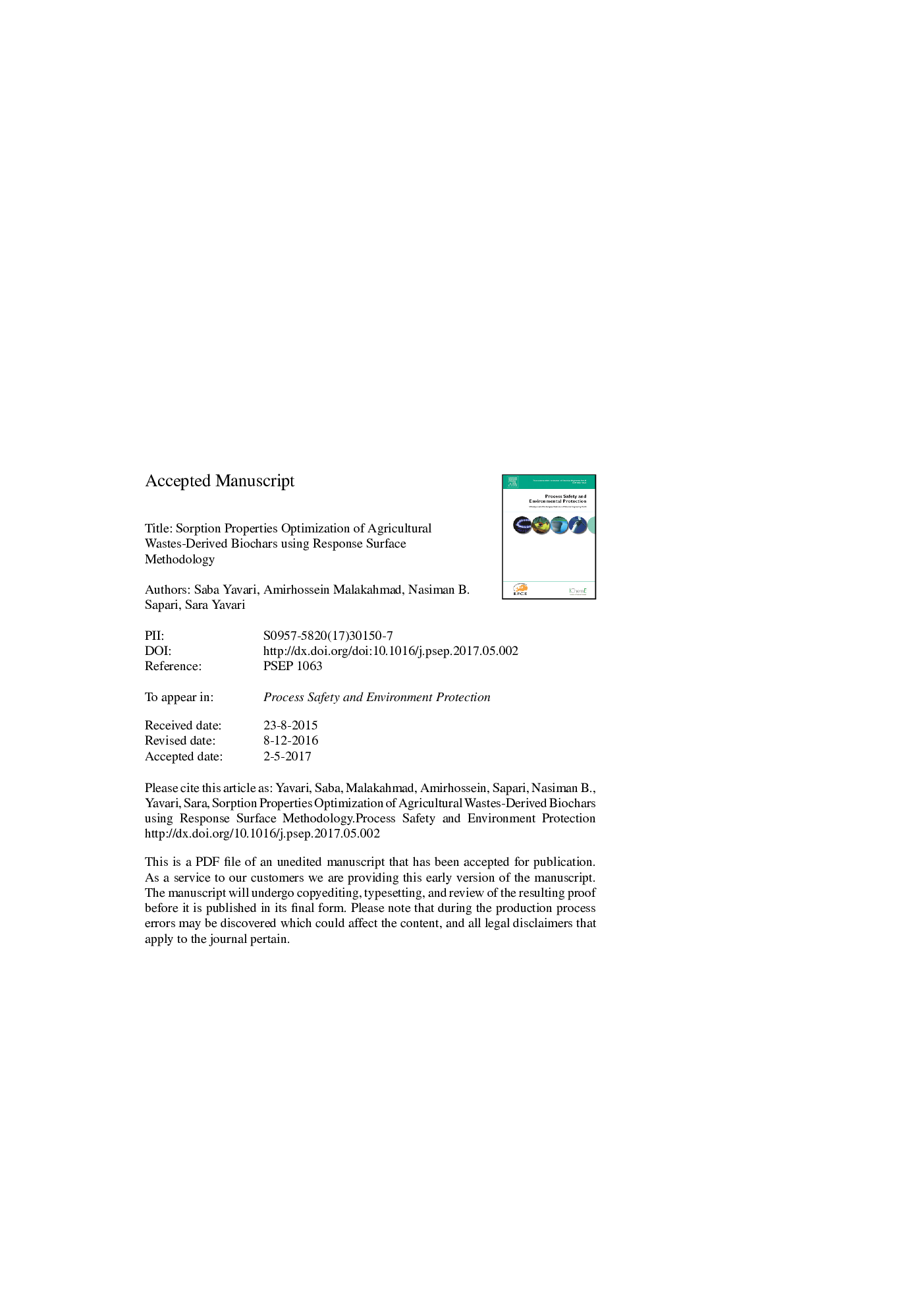| Article ID | Journal | Published Year | Pages | File Type |
|---|---|---|---|---|
| 4980831 | Process Safety and Environmental Protection | 2017 | 32 Pages |
Abstract
Pyrolysis of biomass into biochar and application of a carbon-rich product to water and soil media have been demonstrated to be effective in sequestering of contaminants. Fundamentally, biochar characteristics are controlled by feedstock and pyrolysis variables. The present study investigated the effects of synthesis variables (highest treatment temperature, heating rate and residence time) on biochar sorption properties. Oil palm empty fruit bunch (EFB) and rice husk (RH) biomasses were compared as initial feedstock. The variables were optimized using response surface methodology (RSM) to optimize the values of responses including biochars organic carbon content, cation exchange capacity (CEC), surface area and pores volume. Sorption performances of the optimized biochars were further investigated in removal of a polar imidazolinone herbicide from soil. Based on the results, pyrolysis temperature was the most effective variable on the responses followed by residence time and heating rate. Optimum conditions to maximize the biochars sorption properties were pyrolysis temperature of 493.44 °C and 700 °C and residence time of 1 h and 3 h for EFB and RH biochars, respectively. The best heating rate was 3 °C/min for both biochars. Optimized EFB biochar showed higher affinity for the herbicide due to its higher CEC and functionality, effective in sorption of polar compounds.
Keywords
CECPVDFASTMEFBS.D.standard deviationanalysis of varianceANOVAAmerican society for testing and materialsPyrolysis temperatureC.V.Response surface methodologyRSMResponse surface methodology (RSM)Residence timeBETRice huskCoefficient of varianceCEC, Cation exchange capacityOil palm empty fruit bunchesHeating ratehigh performance liquid chromatographyHPLCempty fruit bunch
Related Topics
Physical Sciences and Engineering
Chemical Engineering
Chemical Health and Safety
Authors
Saba Yavari, Amirhossein Malakahmad, Nasiman B. Sapari, Sara Yavari,
